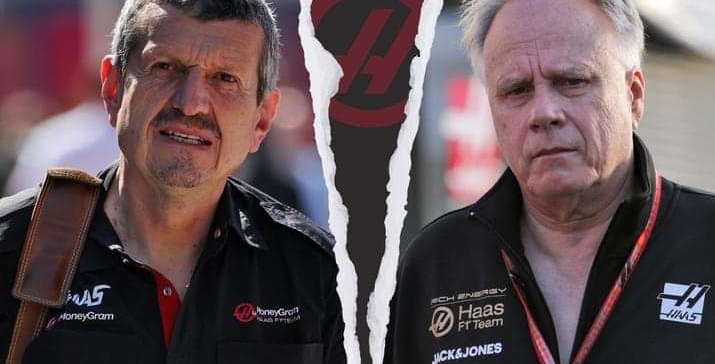THE DISAGREEMENT BEHIND STEINER’S SHOCK HAAS SPLIT

Guenther Steiner’s exit from Haas is a shock move that poses serious questions about the Formula 1 team’s prospects and future.
It is almost unthinkable to imagine Haas without Steiner, for while the team bears the name of its owner Gene Haas, this was really Steiner F1 in all but name.
He made F1’s strangest team set-up possible, became an unexpected star of Netflix’s Drive to Survive series, and saved it from likely extinction during the COVID-19 pandemic.
The implications of his exit are wide-reaching at Haas, but whether his successor Ayao Komatsu – previously the team’s director of engineering – is a good replacement or not, it’s everything that has led to Steiner’s departure that has set alarm bells ringing.
Though the news surprises almost everybody, given Steiner’s importance to the organisation, his permanent presence there, and the fact he was F1’s third longest-serving team boss, it’s not come completely out of the blue.
There has been discontent bubbling away for some time now, and the situation had been coming to a head behind the scenes.
There were frustrations with the way that Haas was run from the very top, i.e. Gene Haas, who has seemingly become apathetic towards his own F1 team and refused to invest in it significantly beyond what it already has.
Steiner and Haas disagreed on the team’s potential in its current form, with a limited UK base in Banbury, a technical facility in Maranello where Haas has a critical alliance with Ferrari, and a barely used but excellent ‘headquarters’ in the United States.
While Steiner felt Haas needed steady investment over the next few years, as it had outgrown its unique multi-location, Ferrari-dependent model, Haas believes the team has underachieved and does not need more resources or improved facilities to perform better.
This fundamental clash caused obvious tension, and ultimately an irreconcilable difference.
Even the official announcement hints at the extent of the disagreement. In it, Haas stresses greater efficiency, maximising the team’s potential, and his supposed desire to compete properly in F1. Komatsu suggests the existing parts just need to be restructured and better led, and that the team in its current form can achieve better results.
If that’s to be taken at face value then the implication is Komatsu told Gene Haas exactly what he wanted to hear and that’s why he now has Steiner’s job.
It seems likely some of that took place in the latter part of 2023, and is tantamount to lobbying for the job in a way – a classic case of some F1 politics.
Whether Komatsu sincerely believes Haas is just ending up with less than the sum of its parts, and therefore can improve just by his leadership, cannot cover up the concern about what Gene Haas thinks his F1 team is, what he wants it to exist for, and what that means for it in reality.
He has always seemed happy just to let the team exist without wanting to invest in it or sell it. He doesn’t need the money and doesn’t need the team to be successful to benefit his Haas Automation brand that it was set up to promote in the first place.
In F1’s cost cap world, with a better prize money spread for the worst performing teams than before, and a bunch of good partners that ironically Steiner was absolutely critical to getting onboard, Haas’s F1 team doesn’t need to achieve much to tick over and either directly or indirectly make it worth the owner’s while.
But that’s an underwhelming existence for a team in an elite sport.
Steiner, a man with extensive experience in F1 and elsewhere in motorsport, was convinced that this was a team treading water and in dire need of assistance. He had pulled it back from the brink of oblivion and wanted that to be a foundation to grow – but it seems the closest Haas has come to promising extra financing is if the team does more with what it already has for now.
If Steiner is right, then Gene Haas has misjudged the situation badly. Haas’s view that his existing investment isn’t being maximised will be severely tested this year.
Haas is F1’s smallest team, with basic facilities and a convoluted structure. Its Banbury UK base is underwhelming and there’s clearly some dysfunction to resolve there too. Banbury-based Komatsu as team boss may at least offer more direct leadership than it had with Steiner being based in the US.
This essentially boils down to who was right – Gene or Guenther? And then whether anything will change if Haas discovers his confidence in his team’s existing potential is misplaced.
Komatsu’s Haas may well be very different to Steiner’s. It may be more efficient, more functional, more competitive. But that would require breaking through a ceiling that this team has been banging up against for a long time.
If Komatsu faces the same problems, it will reflect very poorly on one person. The owner.
But will he then put his money where his mouth is – or prove that all he really needs from his F1 team is for its existence to keep ticking over?




 Everyone
Everyone



